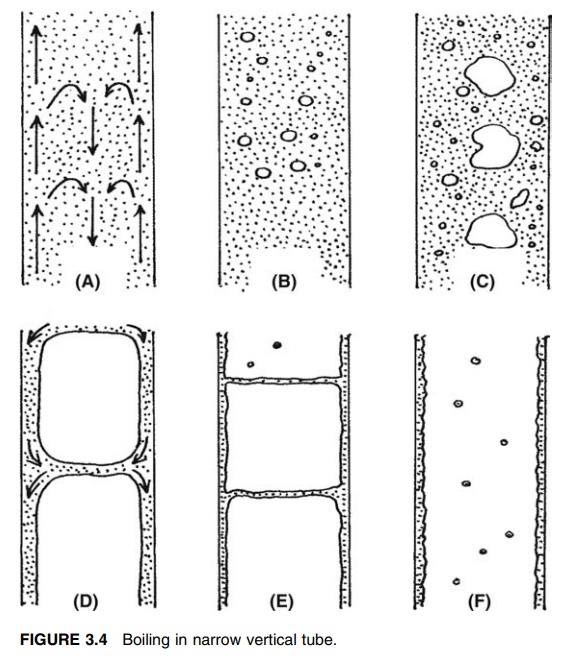Boiling Inside a Vertical Tube
| Home | | Pharmaceutical Technology |Chapter: Pharmaceutical Engineering: Heat Transfer
Heat transfer to liquids boiling in vertical tubes is common in evaporators.
BOILING INSIDE A VERTICAL TUBE
Heat
transfer to liquids boiling in vertical tubes is common in evaporators. If a
long tube of suitable diameter, in which liquid lies at a low level, is heated,
the pattern of boiling shown in Figure 3.4 is established (Coulson and
McNelly). At low levels, boiling may be suppressed by the imposed head (Fig. 3.4A).
Higher in the tube, bubbles are produced, which rise and coalesce (Fig. 3.4B).
Slug formation due to bubble coagulation occurs (Fig. 3.4C, D). The slugs
finally break down (Fig. 3.4E). Escape is hindered, and both liquid and vapor
move upward at an increasing speed. Draining leads to separation of the phases,
giving an annular film of liquid dragged upward by a core of high-velocity
vapor (Fig. 3.4F). In long tubes, the main heat transfer takes place in this
region by either forced convection or nucleate boiling. At low temperature
differences between wall and film, heat transfer occurs quietly, as in forced
convection. This is the normal regime in a climbing film evaporator, and heat
flux can be calculated from correlations of the type given in equation (3.12).
At higher temperature differences, nucleate boiling takes place in the film and
the vigorous movement leads to an increase in heat transfer coefficient.

FIGURE 3.4 Boiling in narrow vertical tube.
Related Topics
